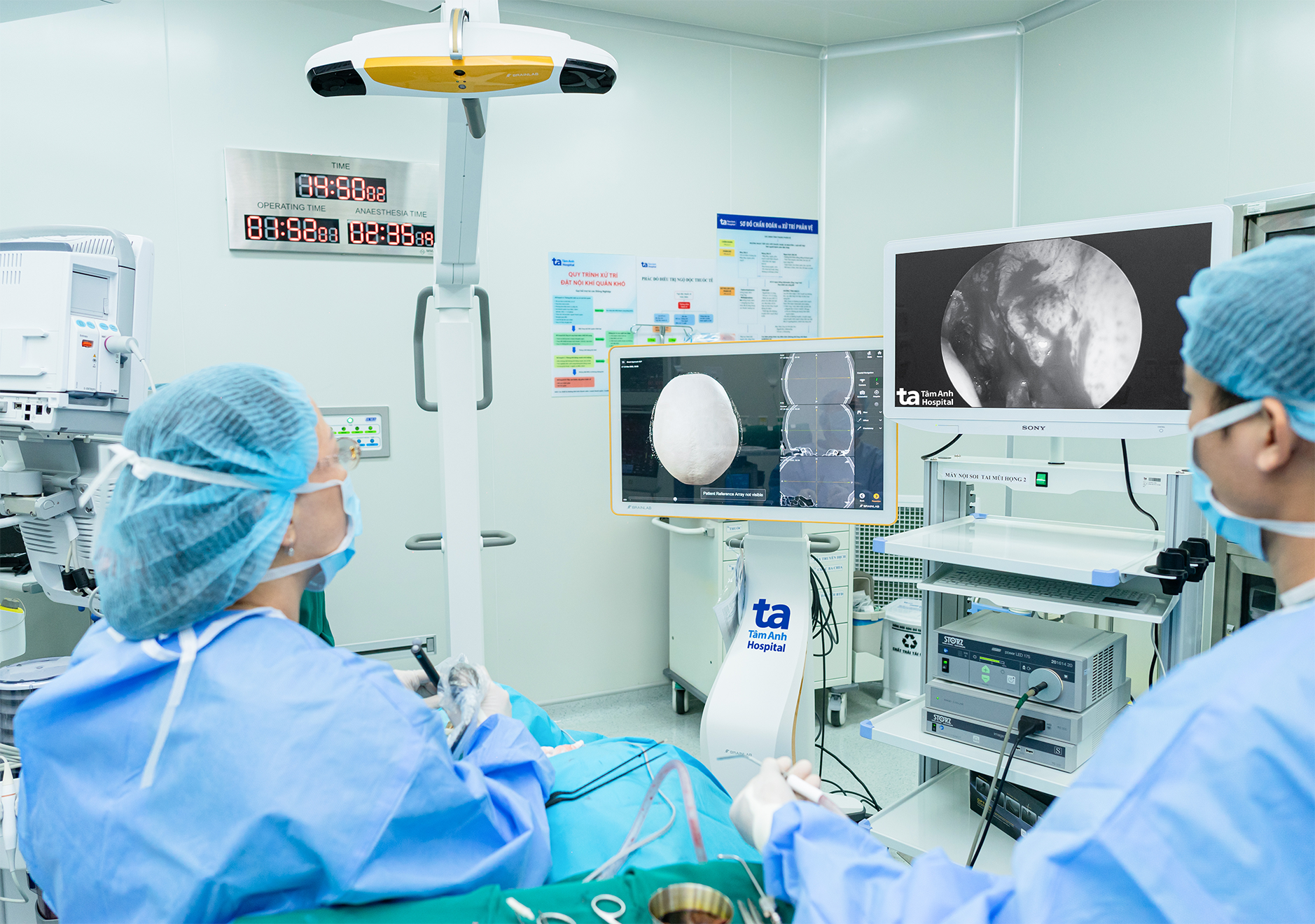Khai's symptoms appeared 4 days prior, and after over-the-counter medications failed to provide relief, he sought examination at Tam Anh General Hospital in Ho Chi Minh City. ENT endoscopy and CT scans revealed nasal mucosal edema, a deviated septum, nasal polyps, pharyngeal congestion, edema and thickening of both vocal cords, and thickening of the maxillary, ethmoid, frontal, and sphenoid sinus mucosa on both sides. Fluid accumulation was observed in the sphenoid sinuses on both sides and the right ethmoid sinus. His eye was inflamed, and his eye movement was restricted when looking up, up and out, and up and in. He had no prior history of sinusitis.
Professor Tran Phan Chung Thuy, consultant at the ENT Center, reported that Khai suffered from purulent rhinosinusitis which had led to inflammation of the right eye socket, nasal polyps, a deviated septum, and pharyngitis. Purulent rhinosinusitis is a condition where the sinuses become infected over a prolonged period, leading to a buildup of thick pus that blocks and damages the sinus lining. The spreading infection caused Khai's severe headaches, eye swelling, and decreased vision.
Due to the complications arising from the purulent rhinosinusitis, medical treatment was deemed less effective in this case, and prompt surgery was necessary to remove the source of inflammation, drain the pus, and clear the blocked sinuses. Without intervention, the spreading infection could lead to further orbital complications, potentially causing an eye abscess, meningitis, cavernous sinus thrombosis, or sepsis.
Professor Thuy decided to use a combination of AI-powered Neuro-Navigation Curve BrainLAB and endoscopy for Khai’s surgery to open the maxillary, ethmoid, frontal, and sphenoid sinuses, and to correct his deviated septum.
 |
Professor Thuy (left) performing surgery on Khai. Photo: Tam Anh General Hospital |
Professor Thuy (left) performing surgery on Khai. Photo: Tam Anh General Hospital
Before the operation, Khai's MRI images were uploaded to the system to create a "map" of his sinuses. The system connected and integrated the patient's sinus structure with the MRI images, creating a real-time visual representation for the surgeon to observe on a screen. This guided the surgeon through the sinuses, ensuring accuracy and preventing contact with dangerous areas such as the eye socket and skull base, minimizing the risk of complications.
Professor Thuy corrected the deviated septum endoscopically, then removed the inflamed tissue and nasal polyps in the maxillary sinus, widening the sinus opening. The team drained the thick pus and polyps from the frontal sinus and removed inflamed tissue in the ethmoid sinus. They then removed the pus and polyps from the sphenoid sinus near the eye socket. The pus from the left maxillary sinus was sent for microbial culture testing to identify the bacteria causing the infection and determine the appropriate antibiotics.
According to Professor Thuy, although the patient was young, the progression of sinusitis and its complications occurred rapidly. It's likely that Khai experienced earlier sinusitis symptoms but ignored them, leading to the silent progression of the inflammation without proper treatment. The largest accumulation of pus was located deep in the sphenoid sinus, close to the eye socket and skull base, causing blockage and pressure on the eye socket. This explains why medical treatment was ineffective.
After the surgery, Khai’s health was stable, he recovered well, and was discharged after two days. During his follow-up appointment, he reported no more headaches and reduced nasal congestion. He was advised to maintain daily nasal hygiene with saline solution to keep the sinus openings clear and to avoid contact with dust, smoke, and polluted environments. Common symptoms of complicated sinusitis include eye swelling, eye pain, heavy or drooping eyelids, changes in vision, forehead swelling, fever, and headaches.
Professor Thuy recommends that anyone experiencing these symptoms consult an ENT specialist for prompt diagnosis and treatment to limit potential complications. Preventive measures include avoiding factors that contribute to sinusitis, such as the flu virus, getting vaccinated against the flu, and minimizing exposure to allergens like animal dander, pollen, and chemicals. He also advises keeping the nose and sinuses warm, avoiding smoking, boosting the immune system through a nutritious diet and daily exercise, and washing hands frequently with soap or sanitizer, along with regular health checkups.
Uyen Trinh
| Readers can submit questions about ENT diseases here for doctors to answer. |












